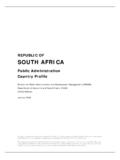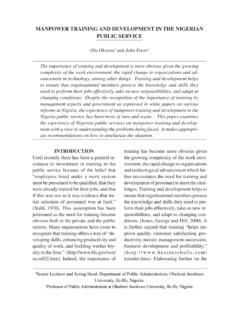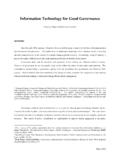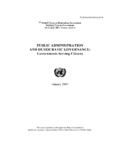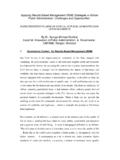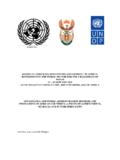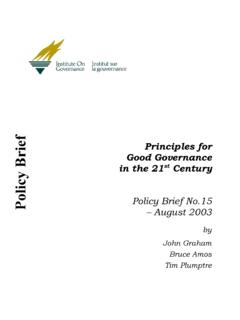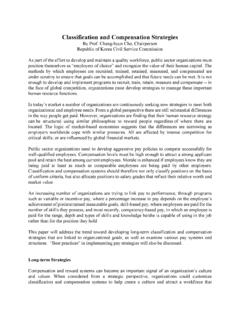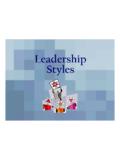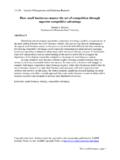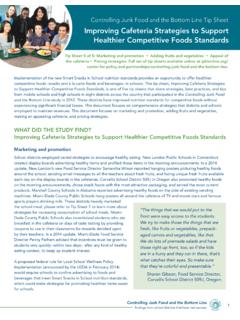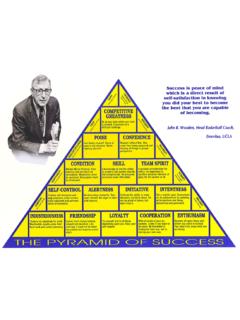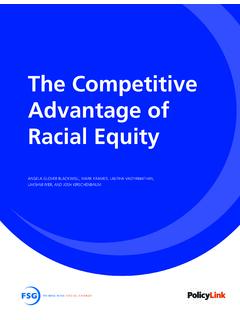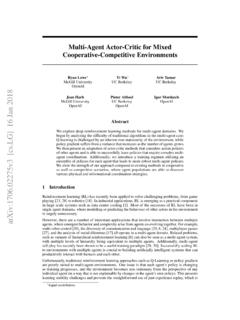Transcription of Competitive Advantage through the Employees
1 387 Competitive Advantage through the Employees Rahim K. Jassim (*) Abstract In today s fast-paced economy competition is an issue of services and products. Much attention has been directed to a better service and the best product and how this can be achieved through utilising the human resources. This research paper identifies the Competitive Advantage concepts and models, Competitive strategies and the main human resource practices that have a significant impact on the employee s performance. Understanding sources of Competitive Advantage has become a major area of research in the field of strategic management. Therefore this research paper also develops an analytical framework for strategic management in order to initiate/formulate and implements the strategic plans successfully.
2 Three questions regarding identifying, defending and achieving Competitive Advantage through the Employees have been raised and answered. Finally a summary of practical criteria of best practice for Competitive Advantage is presented and a general discussion and recommendations have been drawn. Keywords: Competitive Advantage , HRM, Strategic Management, Selection, Performance, Reward. Introduction The firm is regarded as a cohesive organism, which learns to adopt or find better ways of doing things essentially in response to its environment (Child 1997: 67). The question then is what really the firm should do to maintain or to optimise its situation in its environment? Should it focus on its financial situation, it s technology, or it s human resources?
3 To answer this question we should at first see what other researchers have concluded. Barney 1991 suggests that, in order for a resource to qualify as a source of sustained Competitive Advantage , the resource must add value to the firm, it must be rare, it must be inimitable and it must be non-substitutable. Wright, et al 1994 have shown that human resources meet Barney s criteria for being a source of sustainable Competitive Advantage . Coff 1994 argues that human assets are a key source of sustainable Advantage because of causal ambiguity and systematic information making them inimitable. Guest 1990 says that if management trust their workers and give them challenging assignments, workers in return will respond with high motivation, high commitment and high performance.
4 Gratton 1997 identified six factors for success: the commitment of top management; the motivation and aspirations of recruits; the core capabilities of the management team; the team s aspiration; its ability to build and maintain alliances; and the integration of the business into a global network. What does that mean to us?. Its means that sources of Competitive Advantage have shifted from financial resources to technology resources and now to human capital. In other words, success does not depend primarily on the size of the budget or the products supporting technologies. It really depends on employee s attitudes, competencies and skills; their ability to generate commitment and trust, communicate aspirations and work in complex relationships.
5 Now we know one of the sources of Competitive Advantage which is the Employees , then what do we have to do to achieve Competitive Advantage through them?. The answer lies in Competitive strategy and human resource practices. Then what is the Competitive strategy? and what are the human resource practices?. These two questions inspired the following objectives of this research paper: (*)BSC(HONS), MEMGT, PHD(LOND.).MASME, MIPENZ , , REG. ENG. COLLEGE OF TECHNOLOGY AT JEDDAH 388a- Investigate a range of concepts and models of Competitive Advantage , Competitive strategy, and the strategic human resource management and Competitive Advantage . b- Provide a theoretical framework for the study of the major human resource practices in Competitive Advantage through the Employees .
6 C- Develop the reader s ability to identify and develop the Competitive Advantage of a particular organisation and to formulate effective Competitive strategies. An analytical framework for strategic management is developed. d- Investigate how the firm can gain and retain Competitive Advantage through its Employees . Three questions have been raised and answered. e- Define the criteria of best practice for Competitive Advantage . Competitive Strategy What is strategy? In the literature on and for capitalist management, the notion of strategy has become increasingly popular. The strategy concept extracted from the Greek word strategos , a general, which in turn comes from roots meaning army and lead (Legge 1995: 96); but the Greeks provided no clear description.
7 Conventionally, strategy is assumed to involve the planning and directing of the organisation towards some goals and objectives. In any business, there are certain, market-related issues, which are strategic and there are also certain, market-related decisions, which are strategic. These sets of strategic decisions are interrelated. We need a theory of strategy, which acknowledges both and does not downplay one or the other. Schermerhorn , 1993 defines strategy as a comprehensive plan of action that sets critical direction for an organisation and guides the allocation of its resources. Child 1972 defines strategy as a set of fundamental or critical choices about the ends and means of a business. Strategy choice perspective involves defining strategy.
8 Such choices are critical because they play a decisive role in determining the ultimate success or failure of the business. Firms that combine high levels of competence in multiple modes of strategy making appear to be the highest performers. Clearly, certain market-oriented choices, such as the desired Competitive position of a particular business unit, are strategy. But such concerns do not define the universe of strategy Boxall, 1996 defines strategy as a firm s framework of critical ends and means or strategic paradigm . Such a term implies that Competitive strategy and structure strategy are all connected in a systematic and dynamic fashion. The question is how this strategic plan is formulated in order to be successful? The answer to this question is, if the Human Resource (HR) is integrated into strategic plans, if HR polices are coherent, if line managers have recognised the importance of HR and this is reflected in their behaviour, if the teams aspirations and motivations are considered, if top management are committed, if the business is integrated into a global network and if Employees identify with their firm, then the firm s strategic plan can be implemented successfully.
9 Boxall s strategy definition has been used in developing the analytical framework for strategic management. Competitive Advantage When a firm is implementing a value creating strategy not simultaneously being implemented by any current or potential competitors, then we can say the firm has a Competitive Advantage . And when a firm is implementing a value creating strategy not 389simultaneously being implemented by any current or potential competitors and when these other firms are unable to duplicate the benefits of this strategy, then we can say the firm has a sustained Competitive Advantage (Barney 1991). There are two major models that have to be considered. The first one is the position or environmental model and the second one is the resource-based view model.
10 The Position or Environmental Model. In order to achieve a Competitive Advantage , the firm is required to make a choice about the type of Competitive Advantage it seeks to attain and the scope within which it will attain it. Choosing the Competitive scope or the range of the firm s activities can play a powerful role in determining Competitive Advantage because it aims to establish a profitable and sustainable position against the forces that determine your industry competition. What is Competitive strategy?. Porter 1985 defines the Competitive strategy as, the positioning of a company in its Competitive environment. Also Porter has posed two important questions: What is the structure or the attractiveness of the industry which the company is in?
